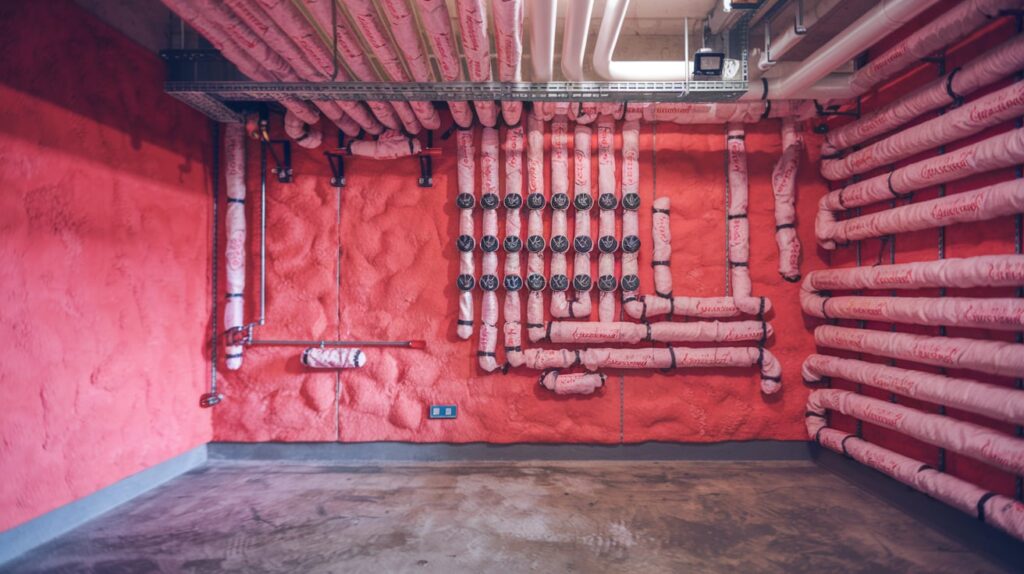Pipework insulation is essential for maintaining energy efficiency, preventing heat loss, and reducing energy bills. Explore the benefits of pipework insulations and provide a step-by-step guide to installing it.
Pipework Insulation
Pipe insulation is a material that is applied to pipes to reduce heat loss or gain. It helps to maintain the temperature of the fluid flowing through the pipes, whether it’s hot or cold.

Benefits of Pipework Insulations
- Energy Efficiency: Pipework insulations helps to reduce heat loss, leading to lower energy bills.
- Reduced Condensation: Insulation can prevent condensation on pipes, which can cause damage and mold growth.
- Noise Reduction: Pipe insulation can help to reduce noise transmission, making your home or business quieter.
- Increased Comfort: By maintaining the temperature of the fluid flowing through your pipes, insulation can improve your overall comfort.
- Environmental Benefits: Reducing energy consumption through pipe insulation can help to reduce your carbon footprint and contribute to a more sustainable future.
Types of Pipework Insulation
There are several types of pipe insulation materials available, including:
- Foam Insulation: This is a popular choice due to its high R-value (insulation effectiveness) and ease of installation.
- Mineral Wool Insulation: Mineral wool is a good choice for high-temperature applications.
- Aerogel Insulation: Aerogel is a highly effective insulator but can be more expensive.
How to Install Pipework Insulation
Installing pipe insulation is a relatively simple task that can be done by most homeowners or DIY enthusiasts. Here’s a step-by-step guide:
- Measure the Pipes: Measure the length and diameter of the pipes you need to insulate.
- Choose the Right Insulation: Select the appropriate type of insulation for your application based on factors such as temperature and environmental conditions.
- Prepare the Pipes: Clean the pipes to remove any dirt or debris.
- Apply the Insulation: Cut the insulation to size and apply it to the pipes, ensuring it is securely attached.
- Seal the Seams: Seal any gaps between the insulation and the pipes to prevent heat loss.
Tips for Effective Pipework Insulation
- Consider the Environment: The type of insulation you choose should be suitable for the environment in which your pipes are located.
- Thickness Matters: The thickness of the insulation will determine its effectiveness. Thicker insulation generally provides better performance.
- Proper Installation: Ensure the insulation is installed correctly to maximize its benefits.
- Regular Inspection: Inspect your pipework insulation regularly to check for any damage or deterioration.
Frequently Asked Questions
Q: How often should I inspect my pipework’s insulation?
It is recommended to inspect your pipework insulations annually.
Q: Can I install pipe insulation myself?
Yes, you can install pipe insulation yourself. However, if you are unsure, it’s best to consult with a professional.
Q: How long does pipe insulation last?
The lifespan of pipe insulation can vary depending on the type of insulation and the environmental conditions. However, most insulation materials can last for many years.
Q: Can pipe insulation reduce noise?
Yes, pipe insulation can help to reduce noise transmission.
Q: Is pipe insulation expensive?
The cost of pipework insulations can vary depending on the type and thickness of the insulation. However, the long-term savings from reduced energy bills can make it a worthwhile investment.




